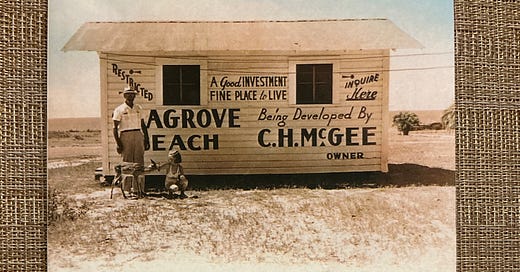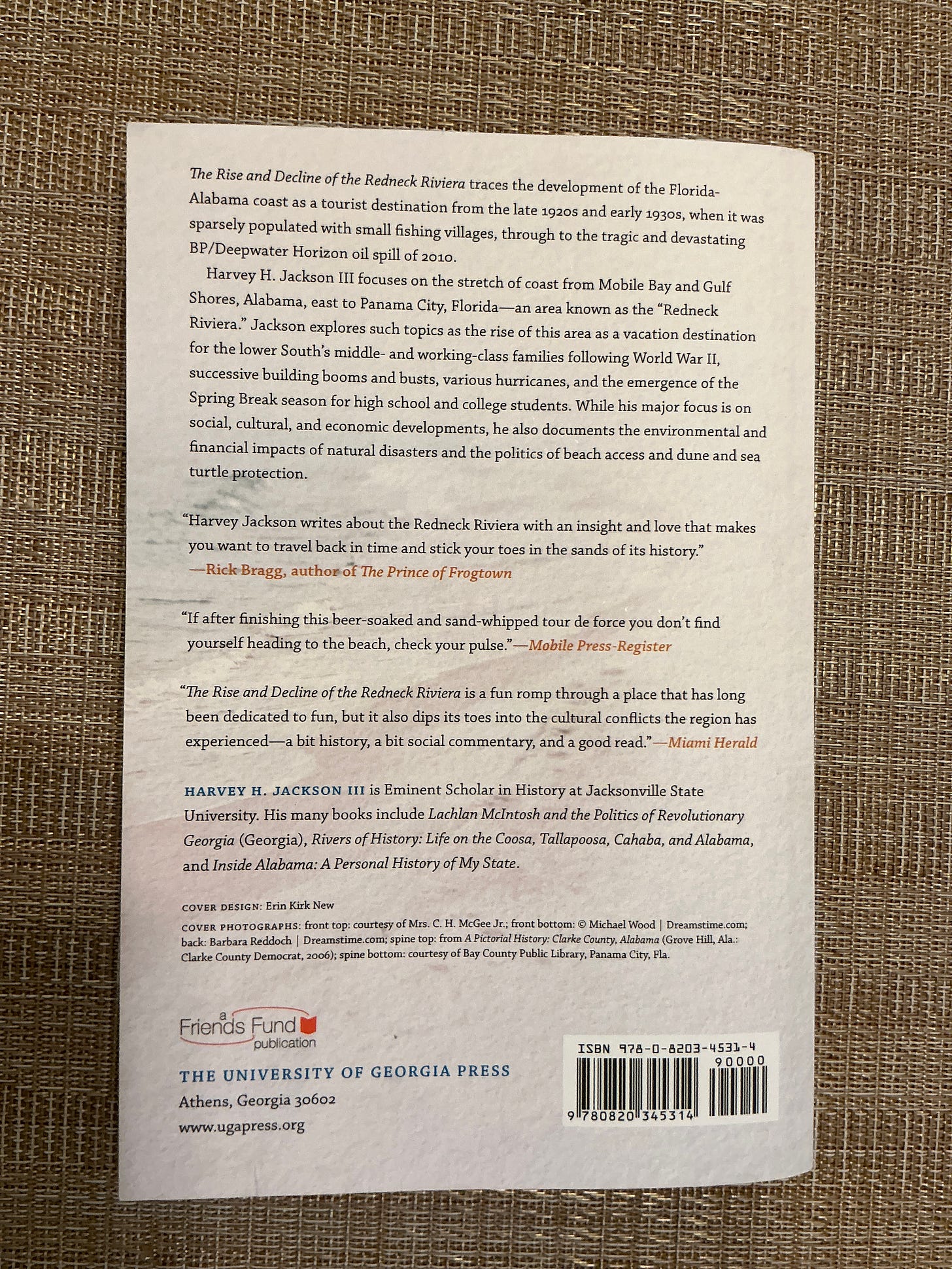Book Review: “The Rise and Decline of the Redneck Riviera: An Insider’s History of the Florida-Alabama Coast” by Harvey H. Jackson III
If we went for a coffee today, maybe at the Pink Coyote here in Fort Walton Beach, I’d love it if the conversation wandered to the content of this book.
How did I get the book?
Back in December, Gen and I celebrated 30 years of marriage by renting a cottage in Sandestin and bringing the family for a week’s holiday there. We had a wonderful time. Sandestin was empty, the Hotel Effie was at 6% capacity. We had the run of the place.
One of our activities was a drive down 30A with the intent of stopping in Seaside at the bookstore there. It’s called “Sundog Books.” It’s all that you would want from a locally owned bookshop in a tourist area. I found this book there and snapped it up.
No one seems to know the history of Fort Walton Beach. Even the people that have lived here for decades. This book was my best shot at trying to understand the culture of this city that I’m pastoring a church in.
What’s it about?
The author is a history professor in Jacksonville, but he grew up coming to the Florida-Alabama beaches for a week or two every summer. His grandmother had bought a cottage in Seagrove. His book combines his profession as historian with his lived experience in the area.
Each chapter walks through a decade. It starts around the turn of the last century and moves up into the 2010’s when it was published. It spans the coast from Orange Beach to Panama City Beach. He includes official records, news articles, interviews and then personal anecdotes.
Each chapter had something about Fort Walton Beach.
I was stunned to discover that Fort Walton until the 1950’s was known for gambling. That’s the reason people came here, it was to gamble. There were laws against it, but they weren’t enforced until the Tampa Tribune ran an article, the governor of Florida relieved the sheriff of duty and the clean up began. The Shalimar Club was a big draw. But, there were slot machines in many stores and gas stations. Even within site of the court house.
Jackson writes:
But not everyone came solely to visit the “dens.” Prominent among the visitors were veterans who had spent time at Eglin and returned with their families to do what tourists were doing all along the coast—fish, swim, maybe take in a show at one of the clubs, and just relax. Some of these veterans stayed in the military, made it their career, and were on active duty at bases scattered around the lower South. With Eglin’s amenities available to them, including the Officers and Non-Com clubs down the road an on the Gulf, Fort Walton had everything they could want. So it comes as no surprise that later, when the career servicemen’s retired, many settled there and turned the communications into a quiet suburb, the hometown they had always wanted when they were moving from assignment to assignment. Later still, when growth of the type that eventually consumed Destin approached their neighbourhoods, they fought it.
The origin of “the Miracle Strip” is hinted at. How “Goofy Golf” became a thing is described. Where the Gulfarium got its start is interesting. And, why Okaloosa Island was developed in the manner it was is also told.
There’s fascinating stories told of the beginnings of Seagrove, Seaside, Grayton Beach, Watercolor, the Green Knight in Destin, the Flora-Bama Bar, mullet-tossing and so on and so on. The book concluded with the BP oil spill and the response to that disaster.
What did I think?
Overall, I’m grateful for this book. I found it enormously helpful.
There was one aspect that I didn’t appreciate. The author seems to have a distinct bias against religion, faith and Christianity. The book is a product of its time, and in the academy, evangelicals were the whipping boy at that time. He seems to be pro-alcohol, pro-licentiousness, and encourages the loss of inhibition.
Despite the bias, it’s well worth reading and I’m planning to recommend it to my colleagues in the area. It will help us be more effective at ministering to the people who live and work and visit.
Conclusion:
Three cheers for locally owned bookstores! Three cheers for professors that merge their personal and professional lives to produce helpful things for others.
And, come visit the Emerald Coast, or the Florida-Alabama Coast, or “The Beach” or whatever we are calling it these days…
andy





